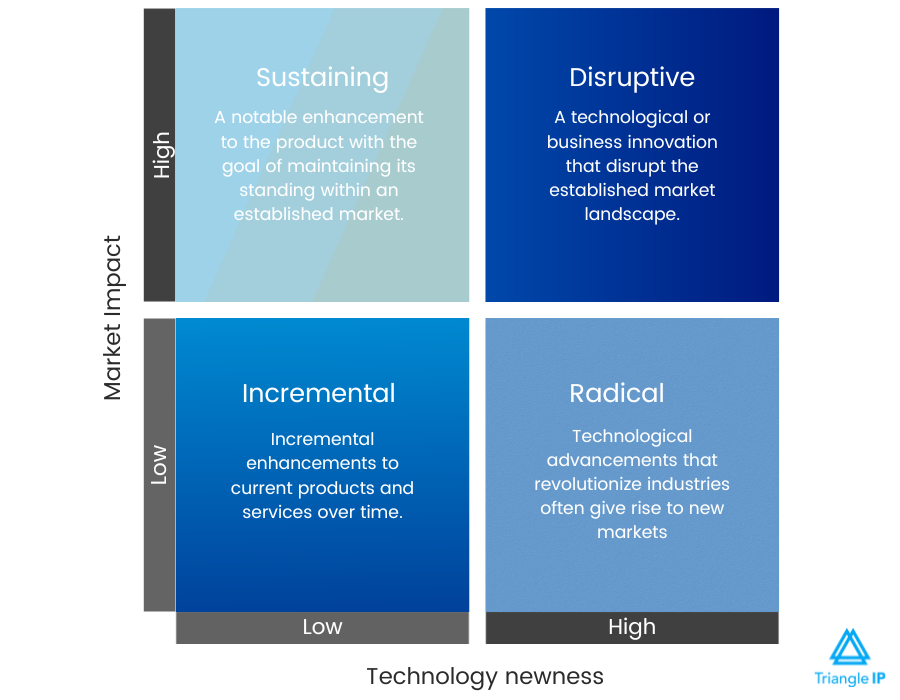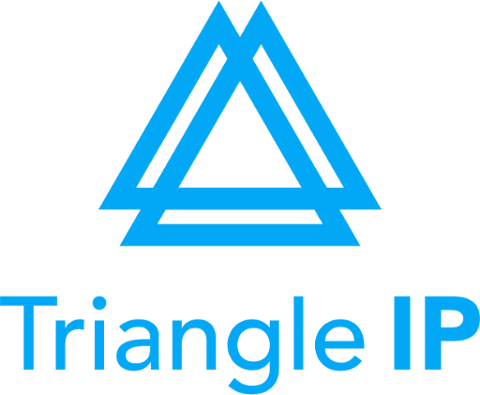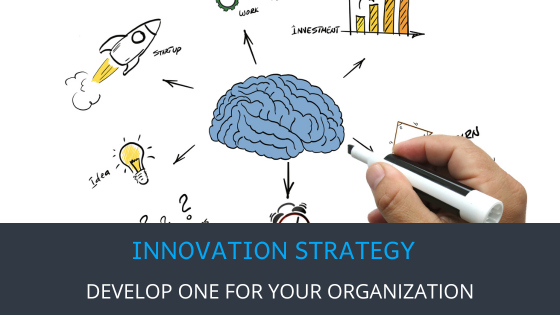Struggling with innovation? You’re in good company. Despite the widespread recognition of innovation’s significance for growth, only 6% of global executives find their innovation efforts satisfactory and rest are unsatisfied.
If you resonate with them, fear not—this article is tailored to your needs. We’ll delve into innovation strategies that can systematize and improve your approach.
Expect practical tips, real-world examples, and guidelines for success. We’ll also highlight best practices and common pitfalls.
Ready to fine-tune your innovation strategy? Let’s get started.
What is an Innovation Strategy?
Quoting Thomas Franklin, Founder of Triangle IP, an innovation strategy is described as:
“A coordinated system of interrelated processes and organizational structures that governs how a company identifies novel problems and solutions, transforms ideas into viable business concepts and product designs, and determines which innovation initiatives receive investment.”
Innovation strategy tackles essential questions such as when to enter the market, which market to enter, why to enter, how to create value, and more.
Moreover, an innovation strategy outlines your purpose, goals, resource allocation, value creation, and the type of innovation that suits your company best.
Without an innovation strategy, a company is like a ship sailing without a compass—directionless and susceptible to drift. Even with effort and resources, the absence of a guiding strategy can result in wasted potential and missed opportunities, leaving the company vulnerable to falling behind competitors.
Just as a compass guides a ship, an innovation strategy steers a company toward sustainable growth and a competitive edge.
As we further our journey through innovation strategy, understanding the different forms of innovation can provide crucial insights.
Types of Innovation
There are majorly four types of innovation categories based on technological advancement and market impact, as given below:

1. Incremental Innovation
Incremental innovation, as the name implies, involves making minor enhancements to existing products and services. It may not always grab the headlines since it lacks the excitement of ground-breaking developments, but it’s vital to virtually every organization’s operations.
As long as it delivers added value to the intended customer base, it qualifies as a form of innovation.
For large-scale enterprises, incremental innovation is akin to striking gold. Even the tiniest tweaks to their processes can yield substantial gains. Similar to how beverage companies constantly innovate in packaging, small innovations in IP management can lead to significant advancements, inspiring packaging innovation in the beverage industry.
Now, let’s delve into a specific approach to incremental innovation, exemplified by Google’s 70-20-10 rule. According to this principle, a whopping 70% of innovation efforts should be funneled into incremental enhancements, with 20% focusing on innovations that bolster the core and the remaining 10% earmarked for radical innovations that birth entirely new business ventures.
Additionally, consider MySQL’s journey in the early 2000s as a prime illustration. MySQL opted for incremental innovations, harnessing an existing codebase and introducing only the must-have features for their target audience. This savvy strategy enabled MySQL to navigate the fiercely competitive landscape of database management systems, culminating in its remarkable acquisition for $1 billion in 2008.
While the examples of Google and MySQL might seem old, the power of incremental innovation has not been reduced. For instance, Spotify continually refines its algorithms to personalize user experiences with incremental innovations. The company’s investment in understanding listening habits allows them to create features like ‘Discover Weekly,’ which keeps users engaged and improves satisfaction — a subtle yet powerful form of incremental innovation.
2. Sustaining Innovation
Sustaining innovation involves rolling out enhanced versions of your solution within an established market, primarily aimed at boosting profitability rather than expanding market share.
In the case of large corporations, they often pinpoint a specific customer segment and develop upgraded iterations of their solution tailored to their most valued clientele. This approach enables them to command higher profit margins for a “fresh” product, ultimately increasing profits.
Moreover, while incremental and sustaining innovations share similarities, the key distinction lies in their respective objectives. Incremental innovation primarily seeks to maintain user satisfaction among existing customers, whereas sustaining innovation concentrates on elevating or preserving market share and profitability through augmented margins and fresh sales opportunities.
Furthermore, incremental innovations typically involve fewer substantial updates than sustaining innovations.
For instance, the annual release of new MacBooks featuring enhanced processors, designs, displays, and more is a prime example of sustaining innovations. Conversely, incremental innovations encompass software updates, bug fixes, and minor feature enhancements.
3. Radical Innovation
Radical innovations are rare, once-in-a-generation breakthroughs that have the power to transform the world. To achieve such breakthroughs, developing a comprehensive innovation strategy is vital, as outlined in developing a robust innovation strategy for your organization. In everyday conversation, most people use the term ‘innovation’ to describe these game-changing advances.
These innovations leverage cutting-edge technologies to develop products that create entirely new demands in the market.
For instance, smartphones, televisions, washing machines, and the internet are all considered radical innovations, as they introduced new technologies and revolutionized how we address everyday challenges.
A more recent example is blockchain, which harnessed technology in a completely novel way, creating a new market valued at $27.84 billion in 2024, projected to grow 825.93 billion by 2032. Apart from that, eCommerce platforms like Amazon utilized revolutionary technology (the internet) and a new business model to create a market value at $2.079 trillion (yes, trillion with a ‘T’).
However, it’s important to note that pursuing radical innovations comes with significant levels of uncertainty and can consume a substantial amount of time and resources.
Jeff Bezos, the founder of Amazon, believes that failure while innovating is normal, and innovators must embrace it. He once said in CNBC interview:
“You cannot invent and pioneer if you cannot accept failure. To invent, you need to experiment. If you know in advance that it’s going to work, it is not an experiment.”
Achieving a balance between these ambitious endeavors and other ongoing efforts is crucial.
4. Disruptive Innovation
Source: The Disruptive Innovation Model
Disruptive innovations leverage novel technology or business models to ‘disrupt’ the current market or carve out a new niche.
Initially, these disruptive products often target less profitable lower-end customers before rapidly expanding their reach to higher-end clientele. This strategy stands in contrast to established companies, which typically focus on sustaining innovations tailored to their most valuable customers.
Disruptors begin by capturing lower market segments and then ascend the ladder.
For instance, during QuickBooks’ introduction, it focused on serving small business owners, while more intricate accounting software catered to larger organizations. Despite offering only half the features, QuickBooks resonated with the lower segment, resulting in exponential growth and eventual dominance in the market.
Read more: 22 Tips to Master the 5 Skills of Disruptive Innovators.
Beyond these four types, there are several other forms of innovation worth exploring; you can find more details here.
Now that we’ve covered various types of innovation your organization could leverage. Let’s talk about the practical aspects of creating a strategy and utilizing popular frameworks to support this process.
How To Create and Execute an Innovation Strategy?
In this section, we’ll explore proven innovation frameworks. Use these insights to shape a tailored strategy for your organization.
Design Thinking
Design thinking is a user-centric method of coming up with innovative solutions. It places full focus on the user’s needs and how you can develop desirable, feasible, and viable solutions. Observing users’ actions and building solutions accordingly is the central idea behind design thinking.
The framework has four components:
- Clarify: Identify your target user’s problems by monitoring product usage, conducting interviews, researching, etc. Create a problem statement using the HMW (How Might We) framework to maximize the opportunity for brainstorming.
- Ideate: Find possible solutions to the problem statement defined previously. You can come up with multiple ideas for different problems. The key is to allow people to express their wildest ideas.
- Develop: Create prototypes as soon as possible and discard ideas or solutions that don’t fulfill the user’s needs.
- Implement: Deploy your solution to your users and share the results with your stakeholders. Continue iterating according to user feedback.
Source: Stages of Design Thinking
An illustrative example of design thinking in action is Airbnb’s initiative to enhance customer conversion rates. Facing the problem of low-quality photos hindering bookings, Airbnb applied the ‘Clarify’ stage by identifying the issue. In the ‘Ideate’ stage, they brainstormed solutions by empathizing with customers, realizing that clear pictures mattered most.
For the ‘Develop’ stage, they creatively addressed the problem: taking high-quality photos themselves. The positive results exemplify the success of this seemingly simple solution, representing the ‘Implement’ stage. This iterative approach helped Airbnb not only improve customer experience but also increase their earnings significantly.
Read more: Intrapreneurship Programs Driving Change in Large Organizations
Lean Startup
Introduced by Eric Ries, the Lean Startup framework emphasizes the importance of getting an MVP (minimum viable product) out to test your assumptions.
It uses the ‘Build-Measure-Learn’ feedback loop, which works in the following way:
Hypothesize: Create a problem statement or a hypothesis you wish to test.
Build: Build an MVP that contains only the bare essentials required to fulfill the need.
Measure: Gather data to challenge your assumptions. Is the product viable? Do users like it? Does it fulfill their needs effectively?
Learn: Based on the data gathered, choose whether to pivot or continue in the same direction.
The lean startup method excels in unexplored markets where risks are manageable. Zappos, for instance, applied this methodology when launching its online retail store. They started with a basic e-commerce website, iteratively testing pricing models and experimenting with marketing strategies. This allowed rapid customer base expansion without heavy time or financial commitments in development and marketing.
Stage-Gate Process
The stage-gate process reduces risk in the innovation process by setting ‘gates’ to review progress and assess that you’re on the right track.
It’s an excellent tool for filtering ideas and focusing your resources on the best ones.
As seen in the image, there’s a gate after every important part of the innovation process. For example, one to judge the idea’s quality, another to identify the scope, feasibility, business case, and so on.
The stage-gate process is used heavily in high-risk industries like pharmaceuticals and aerospace to minimize resource wastage.
Blue Ocean Strategy
It’s a popular innovation framework that focuses on creating and dominating “blue oceans” or new markets.
The two main components of this strategy are the ‘Four Actions Framework’ and the ‘Strategy Canvas.’ Here’s a breakdown of each of them:
- The Strategy Canvas: Plot the value curves of existing companies. For example, this is the value curve of the wine market in the US before the introduction of Casella Wines:
Source: Blue Ocean Strategy
Here are the four components of the Four Actions Framework:
- Eliminate: Factors in the existing market that you must eliminate
- Raise: Factors that you must raise above the standard
- Create: New factors that you should create to add value
- Reduce: Factors that you should reduce
This is how Casella Wines created a new curve using the Four Actions Framework:
Source: Yellow Tail
There’s also the 6 PATH framework to identify and create blue oceans.
Jobs To Be Done
Clayton Christensen, in his book “Competing Against Luck”, suggested that JTBD is a theory–not a framework–that helps you understand the ‘job’ that a person ‘hires’ a product/service for. It enables you to go past stats and understand the story behind the purchase.
Focusing on jobs rather than just the functional aspect of the product helps you come up with innovative solutions for problems you didn’t even know existed.
You must conduct interviews to build a ‘job spec’ that contains the functional, social, and emotional dimensions that define desired progress, the tradeoffs, competing solutions, obstacles and anxieties, etc.
With the frameworks out of the way, let’s go over some actionable steps you can use to create an innovation strategy for your organization:
Step 1. Establish the ‘Why’ and Innovation Objectives
Every strategy starts by answering ‘why.’ Be it your business strategy, marketing strategy, or price strategy.
In this case, you must answer why your company wants to innovate and how it ties into the larger business plan.
After that, you need to establish your objectives for innovation. Here are a few questions you can ask to clarify them:
- What is the desired outcome: increased market share, revenue growth, customer satisfaction, etc?
- Who is the target audience and beneficiary of our product?
- Quantifiable goals
- How will innovation differentiate us from our competition
These questions will help you identify the scope of your innovation strategy, too: Will it be limited to sustainable/incremental innovations to grow the core business, or will it focus more on disruptive/radical innovations to expand into other markets?
Step 2. Identify Problems in Your Industry
The next part of your innovation strategy is finding the problems you aim to solve.
The key to this step is running insightful customer interviews that uncover why people use certain products. Remember, your interviews should lead to stories, not stats.
You can create a ‘job spec’ as outlined in the JTBD theory to help you find why people use a product. It contains the following information:
- Functional, emotional, and social dimensions that define the user’s desired progress
- Tradeoffs the customer is willing to make
- Competing solutions that you must beat
- Obstacles and anxieties that the customer must overcome
You can also use the Four Actions framework discussed previously to find new market segments.
Also, conduct a competitive analysis to find gaps your innovations can fill.
Step 3. Resource Allocation
A balanced allocation of resources will help you achieve a good ROI on your innovation investment.
Research shows that 70% of investment in the core business, 20% in adjacent enterprises, and 10% in transformational innovations work best.
However, you can change it to suit your ambition and the company’s needs. Early-stage companies invest more in transformative/disruptive technologies, while market leaders might focus on their core business.
The major resources you need are talented individuals, cash, time, and equipment.
Step 4. Brainstorming Solutions
Your strategy should contain a general idea of your methodology to develop solutions. It will help streamline the process and make it scalable.
Design Thinking and Lean Startup are two popular frameworks we’ve discussed for that.
Both of them emphasize one idea: iteration. You must understand the problem, develop an MVP/prototype as soon as possible, and get it out in the market to test your assumptions.
While lean startup focuses on the data side, design thinking is more concerned with empathizing with users and satisfying them.
The best approach would be to integrate elements from both frameworks to suit your organization’s goals and needs.
Step 5. Building Scalable Systems
Scaling innovation is the key to sustaining your market position. For that, you need proper systems in place.
First, you must achieve executive buy-in and encourage them to include innovation in all strategic planning, budgeting, and resource allocation initiatives. You can only innovate at scale when your company’s culture encourages and doesn’t treat it like a side thought.
Second, you can implement a crowdsourcing system to get potential ideas from employees, customers, stakeholders, etc.
And finally, you can implement the stage-gate process to filter through these ideas and focus your resources on the most impactful ones.
Must Read: 20 Ways of Using ChatGPT for Innovation
Common Pitfalls While Developing an Innovation Strategy
We’ve talked about frameworks, tools, and steps to implement an innovation strategy, but let’s explore some pitfalls you must avoid falling into while doing so.
Pitfall #1: Weak Market Research
Innovation revolves around solving problems people care about. If you conduct inadequate market research, you could end up:
- Wasting resources on a bad idea
- Wasting resources on the right idea but for the wrong people
- Getting left behind by competition
That’s why conducting solid customer interviews, market assessments, and competitive analysis is essential. You must also share these insights with everyone in the process to avoid failure.
Pitfall #2: Strategic Misalignment
According to a PwC study, 77% of successful innovators said their innovation strategy was closely aligned with their business strategy.
The opposite was also true: companies with strategic misalignment are not doing too great on the innovation scale.
The problem with strategic misalignment is that it disconnects innovation from the rest of the business and makes it a task you do for the sake of it. It also leads to innovation becoming an afterthought, which can never lead to breakthroughs sustainably.
Pitfall #3: Limited Diversity
The two most important things fueling innovation are talent and perspective. You can’t innovate without the correct set of people who express unique, contrarian viewpoints.
Many companies make similar types of people work on innovative ideas, which usually doesn’t end well. Diversity in ideas leads to disruptive insights.
Thus, you must hire and allocate talent accordingly.
Must Read: Strategies for Implementing Effective Innovation Pipeline Management
How the TIP ToolTM Fuels Innovation Culture
Triangle IP is one of the leading providers of patent management software. It allows you to capture and track the progress of innovative ideas throughout your organization.

The TIP ToolTM boosts your organization’s innovation culture and innovator engagement by providing visibility to people, allowing them to realize the impact of their ideas.
Some of its features are:
- Ideas and patent pipeline management platform to identify bottlenecks and calibrate patent prosecution strategy
- Simple and intuitive Invention disclosure forms to capture ideas and boost participation in your company’s innovation and patent program
- Real-time collaboration like Google Docs within the tool to bring innovators, patent attorneys and business teams together
- Case analytics and the probability of it being approved
- Cost predictions to estimate the cost of a patent over years
- Automatic USPTO updates to save you expensive attorney hours
Start a free trial to try out the TIP tool for your organization today!





